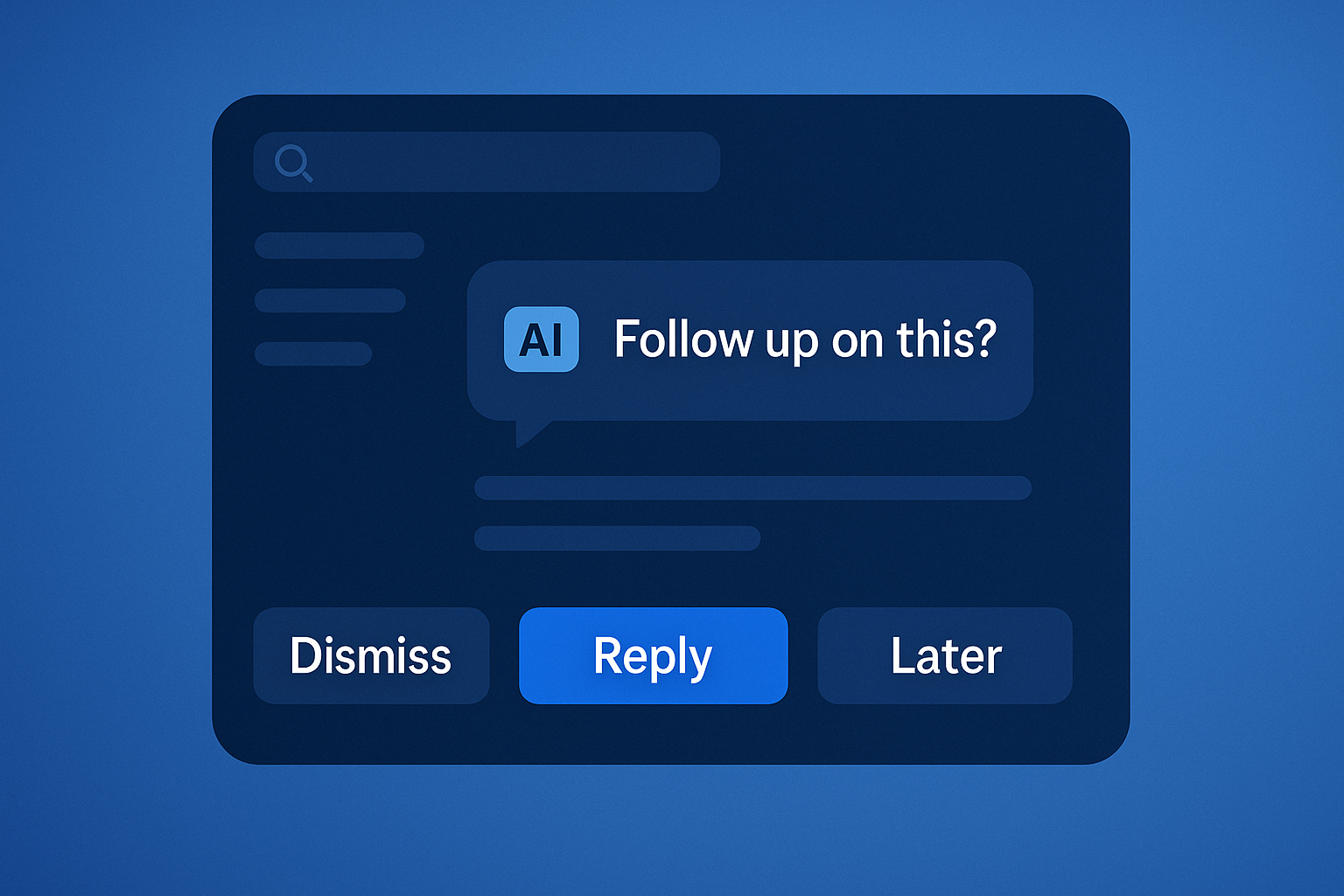AI Reshaping Future of SaaS | 매거진에 참여하세요
AI Reshaping Future of SaaS
#saas #ai #function #core #ux #center #design #UX #productive #b2b
In today’s SaaS world, AI is no longer a nice-to-have—it’s the new baseline.
But the real question is: Is AI just a feature in your product, or is it the core of your user experience?
SaaS Without AI? It’s Already Obsolete.
Just a few years ago, the B2B SaaS battlefield was all about functionality.
Features, team collaboration, stability—that’s where the game was played.
But everything changed in 2023 when OpenAI released the ChatGPT API.
Suddenly, every product needed AI to stay competitive. The pressure is real: if your SaaS doesn’t integrate AI, it feels outdated.
So companies started adding GPT-powered features left and right. But here's the more important question:
Is AI in your SaaS just a feature, or is it a redefinition of the experience itself?
The Game Changers: Notion, Superhuman, Salesforce
Let’s look at how some of the biggest names are reshaping SaaS using AI—not as a plugin, but as a foundation:
Service | AI Capability | Transformation |
|---|---|---|
Notion | Summarization, auto writing, Q&A | From a writing tool to a knowledge interface |
Superhuman | Email summarization, auto-replies | Email time cut by over 50% |
Salesforce | Einstein AI for predictions | From CRM to action-oriented decision assistant |
Their common thread?
AI isn’t added on—it’s infused into the product’s core logic. These aren’t just features; they’re shifts in how users experience the product.
From Tool-Based UX to AI-Centered Decision UX

Traditional SaaS workflows follow this pattern:
- Users decide what they want to do
- They search for and trigger the right feature
- They interpret the result
Now enter AI. The process looks more like:
- AI suggests what to do next
- Users accept, modify, or skip
- Judgment and execution happen together
This shift transforms AI from a helper into the driver of UX.
The user no longer explores options—they’re guided by intelligent nudges.
Not Features, but Behavioral Flow Design
Adding GPT-based suggestions is easy. But making AI lead the user’s flow—that’s a strategic leap.
For example, think of this user thought:
“What should I click next?”
A well-designed AI doesn’t wait—it visually suggests or highlights the next action.
Let’s look at real-world UX scenarios powered by AI:
# | Situation | AI Intervention | User Benefit |
|---|---|---|---|
1 | Writing an email | Auto-popup “Reply?” with a suggested sentence | One-click response, no overthinking |
2 | Ending a meeting | Highlight “Summarize” with preview | Faster post-meeting actions |
3 | Adding a new task | Suggest similar past tasks | Reduces repetitive effort |
4 | Creating project timelines | Propose due dates, visually emphasize | Prevents missing deadlines |
5 | Analyzing dashboards | Auto-suggest “Explain this spike” when chart changes | Speeds up insight discovery |
6 | Incoming support message on Slack | “Auto reply” button with pre-filled content | Quick customer response |
7 | Reviewing contracts | Highlight “Approve/Reject” with smart order suggestions | Fewer mistakes, faster decisions |
8 | Setting up automations | Propose next step: “Send Slack message?” | Saves setup time |
9 | Sorting email inbox | Suggest filters based on similar emails | Streamlines inbox management |
10 | Ecommerce issue detection | Emphasize “Refund” or “Contact customer” when needed | Faster claim handling |
The Product Manager’s New Checklist: AI as a Native Element
Anyone can integrate GPT via API.
But true differentiation comes from how deeply and invisibly AI is embedded into the product flow.
Ask yourself:
- Is AI involved in the user’s core flow—not just optional tools?
- Would the product feel slower or less helpful without AI?
- Does AI reduce decision fatigue or make next actions obvious?
- If the answer is no, AI is likely just cosmetic.
The Final Test: Is AI a Feature or the Core?
The next era of SaaS won’t be led by whoever has better GPT prompts.
It will be led by products that offer “Decision UX”—experiences where AI helps users move faster, think less, and act smarter.
AI can stay in the background as a sidekick.
Or it can step forward as a UX architect.
Which role does it play in your product?
Source: bunzee.ai – a platform that tracks emerging AI-native SaaS paradigms.






